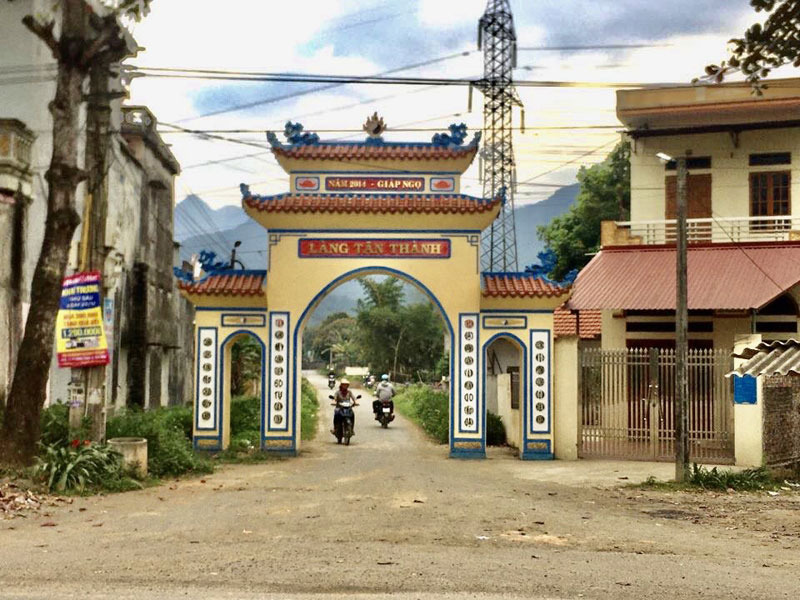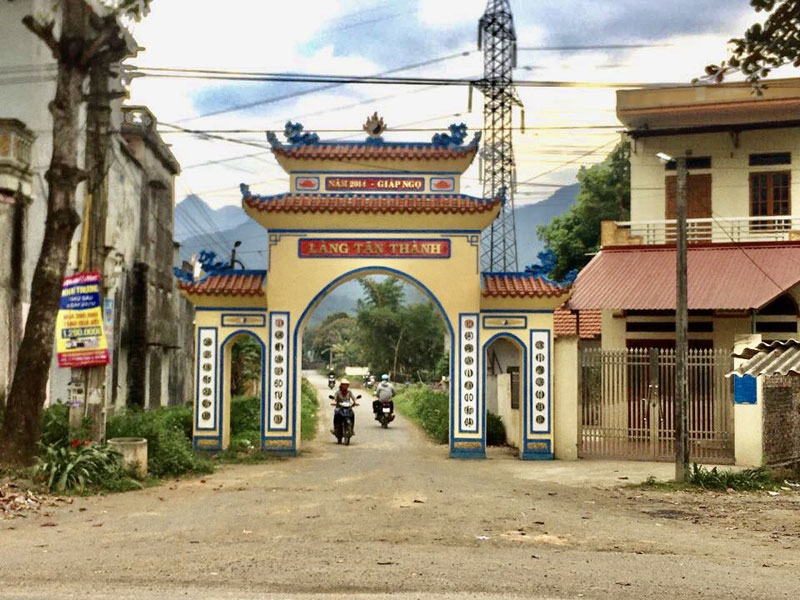
(HBO) - Recently, the movement of building cultural residential areas in Yen Thuy district has been enthusiastically responded by the local people. Every citizen and family are strictly implementing the regulations of the cultural residential areas. The movement of building the cultural residential areas cultural has been developed in both quantity and quality. In 2019, there were 104 out of the 115 cultural residential areas (accounting for 90.43%) meeting the standards of the cultural residential areas.
 Tan Thanh hamlet, Yen Tri commune is the typical cultural residential area of Yen Thuy district with over 10 years of continuous recognition of the title of the cultural residential area.
Tan Thanh hamlet, Yen Tri commune is the typical cultural residential area of Yen Thuy district with over 10 years of continuous recognition of the title of the cultural residential area.
In 2019, with the attention of the Party committees, the appropriate authorities, departments, agencies and organizations from the district to the grassroots level, the movement of building the cultural residential areas has been developing in both quantity and quality, becoming an exciting and widely movement. The review and recognition of the title of the "cultural residential areas” is conducted in accordance with the process and procedures.
In order for the movement of building the cultural residential areas to spread and change the appearance of residential areas, the Steering Committee of the movement of "All People unite to build cultural life” in the district, has been directing the communes and the town to implement the construction of the cultural residential areas in such a way that it must be based on the practical conditions, not erasing the beauties in the people's daily life. They have been propagating so that people can understand and follow, avoiding the situation of chasing after the achievements or not associating with the lives of people. They have also been building the cultural residential areas based on the unique cultural values of the district.
The movement of building the cultural residential areas has contributed to strengthening the unity of the entire people, preserving and promoting the traditional cultural values of the nation, developing economy, accelerating the process of industrialization and modernization of agriculture and rural areas, improving the quality of life for the local people. In 2019, the district's per capita income reached 38.24 million VND. The rate of the poor households fell to 11.25% (down 2.67% compared to that of 2018). The movement of building the cultural residential areas has also contributed to pushing back, eliminating social evils, ensuring the rural security and maintaining the social order and safety.
Through the movement, the local people have had the opportunity to participate in building the models of self-governance and self-reconciliation of the internal conflicts, educating and sensing those who have ever made mistakes. It also helps prevent crime, fight against eradication and social evils, cleaning up the population area, contributing to maintaining discipline, which help people live and work in accordance with laws and community conventions.
With an increasingly vibrant and widespread emulation movement aimed at building cultured residential areas and cultured families, Yen Thuy District has been making steady progress toward improving both the material and spiritual well-being of its people, while fostering a civilized, prosperous, beautiful, and progressive community.
Once lacking recreational spaces and community facilities, Residential Group 2 in Quynh Lam Ward (Hoa Binh City) has recently received attention for the construction of a new, spacious, and fully equipped cultural house. The project followed the model of state support combined with public contributions in both labor and funding.
The "All people unite to build cultural life" movement, which has been effectively integrated with Kim Boi district’s socio-economic development goals, is fostering a lively spirit of emulation across local residential areas, hamlets, villages, public agencies, and enterprises. In addition, through the initiative, traditional cultural values are being preserved and promoted, while community solidarity and mutual support in poverty reduction and economic development are being strengthened.
A working delegation of the Hoa Binh provincial People’s Committee led by its Permanent Vice Chairman Nguyen Van Toan on June 11 inspected the progress of a project to build the Mo Muong Cultural Heritage Conservation Space linked to tourism services in Hop Phong commune, Cao Phong district.
Born and growing in the heroic land of Muong Dong, Dinh Thi Kieu Dung, a resident in Bo town of Kim Boi district, in her childhood was nurtured by the sweet lullabies of her grandmother and mother. These melodies deeply imprinted on her soul, becoming an inseparable part of her love for her ethnic group's culture. For over 20 years, this love for her hometown has driven Dung to research, collect, and pass down the cultural values of the Muong people to future generations.
In the final days of May, the Ethnic Art Troupe of Hoa Binh Province organized performances to serve the people in remote, mountainous, and particularly disadvantaged areas within the province. These were not just ordinary artistic shows, but they were the meaningful journeys aimed at spreading cultural values, enhancing the spiritual life of the people and contributing to the preservation of ethnic minority cultural identities.



 Tan Thanh hamlet, Yen Tri commune is the typical cultural residential area of Yen Thuy district with over 10 years of continuous recognition of the title of the cultural residential area.
Tan Thanh hamlet, Yen Tri commune is the typical cultural residential area of Yen Thuy district with over 10 years of continuous recognition of the title of the cultural residential area.